2017
October
The evolution of communication
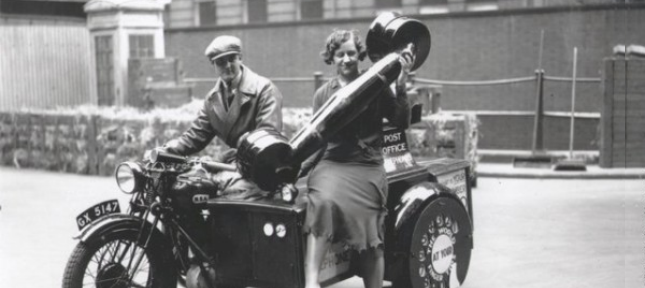
Now it is very hard to check, but still 100 years ago it was difficult to contact subscriber without telephonist. Exactly these telephone fairies provided communication. Their work was the following: to accept the call, to compare in which of available socket the cord should be put in and to connect. In spite of prestige (for that time) and delusive simplicity of this work, it was difficult: high loads, night shifts, intense mode of work, the constant concentration and focus necessity. According to historians, in the early years of the 20th century, 160-170 connections per hour were implemented by one average telephonist. But let's look further.
We are starting remember since ancient times...
The party was in the heat when we started remembering the development of communication technologies. The main idea was to remember everything that somehow concerned information messages transmission between people. The first that everyone remembered (having seen the colleague entering the room whom we asked to bring the next tea portion) was herald or messenger.
The history of information messages exchange begins with the Stone Age. The information was transferred by a smoke of fires, an alarm drum blows, sounds of pipes through the developed alarm towers net. Later people with oral messages were sent. Perhaps this is the first and the most effective way to transmission an urgent message between people. Herald (a person who transferred a message) memorized "letter" from the words of the sender, and then retold it to the recipient. Egypt, Persia, Rome, the Inca state had a developed and well-organized mail.

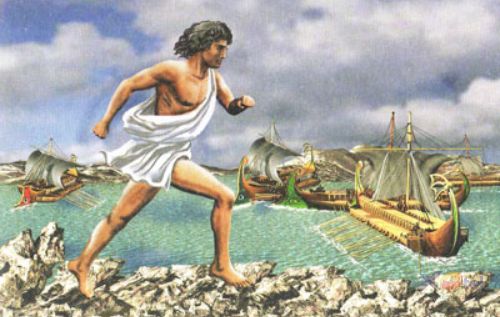
Messengers plied on dusty roads days and nights. They were replaced or they could change horses at specially constructed stations. Actually, from Latin expression "mansio pozita..." that means "station in point…" the word "mail" occurred. 2500 years ago, the relay method of transmitting messages from messenger to messenger was used.
In the last quarter of the 9th century, almost at the very beginning of Kievan Rus existence, one of the oldest in Europe, the Russian mail basis were laid. Only UK and Spain communication services can be put at the same time of occurrence. Apart from them is the Courier Service, the history of which totals more than two centuries in Russia. However it is a special kind of communication that served only government officials and the military.

Ancient letter is a recognized pattern of human communication culture. The special paper was produced, perfumes for envelopes‘ impregnation, cliche, sealing wax and seals – it was in the order of things and to write a letter to another person was a whole ritual.
The pigeon mail
As fast as messenger could be, he wasn’t able to fly like a bird. The mail pigeons made a huge contribution to communication. A kind of short message service, because the dove could carry only a small load, a short letter or just a note. However the pigeon mail was a very effective information channel that politicians, brokers, military and all people used.
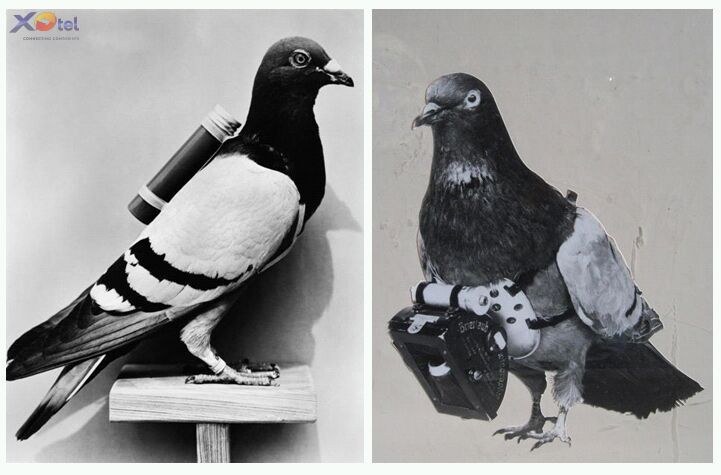
The parameters of the device
- Flight distance is up to 1500 km. (competition come with the maximum distance of 800 km.)
- Speed is up to 100 km/h
- Flight conditions are any (rain, snow, it doesn’t matter)
- Service life is at about 10-15 years (at good care)
- The price is from $100 (the most expensive pigeon is Danish syubian, named "Dolce Vita" was sold for 329 thousand dollars recently)
Passport of the most expensive pigeon (identification goes through the apple of bird‘s eye)

Almost any pigeon can be mail one. These birds have an amazing ability to find their way to the nest, but only if he was born, got up on the wing and lived there approximately 1 year. Then the pigeon can find the way to the house easily, but the maximum distance cannot be 1500 km. Still it isn't clear how pigeons are guided in space.
There is an opinion that they are sensitive to a magnetic field of Earth and infrasound. Also the Sun and stars help them. However there are some disadvantages. Pigeon mail is a simplex communication, because pigeons can't fly there and back. They are capable to come back only to a parental nest. Therefore pigeons for the information purposes took away in special cages or cars in other place where it was necessary to adjust "information channel".
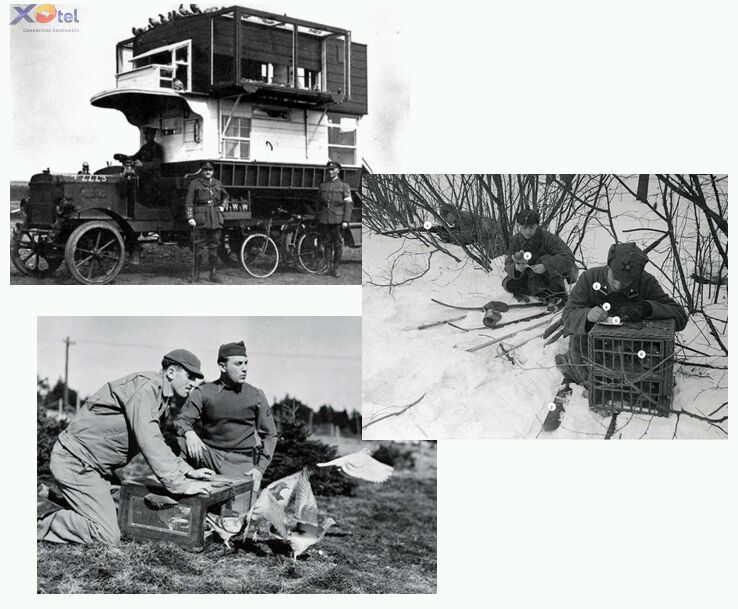
There are, probably, thousands stories and legends of pigeons‘ role in human lives, one of them is about Rothschild family. The news of Napoleon's defeat at Waterloo in 1815 was received by Nathan Rothschild through a pigeon for two days before official news that gave him the chance to lead the campaign at the exchange with the French papers successfully, and to get 40 million dollars profit in the prices of 1815! Even nowadays it is quite good. It is a typical example of information importance, especially in financial spheres.
Sea and military communication
The most important place for communication ensuring is hostilities. Before telegraph and wire telephone exchanges actively appeared (that is still surprising) both sign and light semaphore systems were used. Semaphore or flag alphabet was used in the Navy since 1895. It was developed by the vice admiral Stepan Makarov. The Russian flag alphabet contains of 29 alphabetic and three special signs, and it doesn't include numbers and punctuation marks.
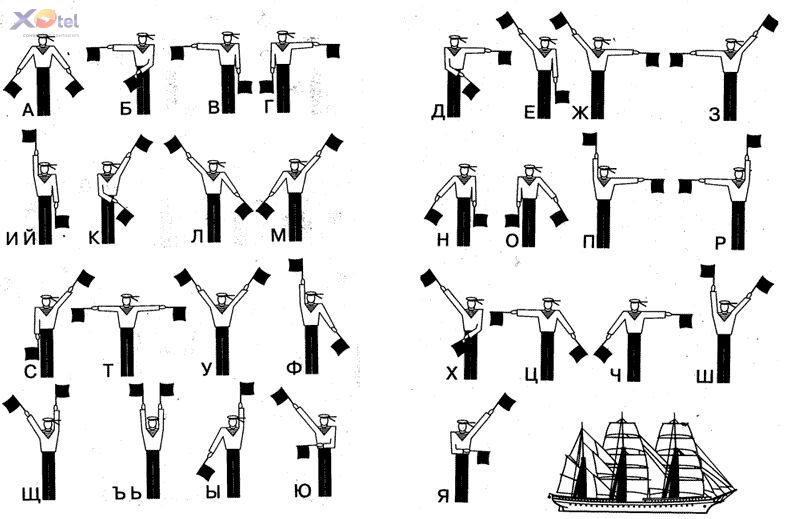
In this type of communication information transmission is conducted by words on letters, and the speed of transmission can reach 60-80 signs per minute. It is strange, but in the Navy of Russia since 2011 the semaphore alphabet training of sailors was canceled, though in the majority of sea powers of the world this discipline is obligatory.
The alarm system by means of special flags is very interesting as well. It is used by sea vessels. Only 29 things were advisable to know everyone who goes to sea, as far as I understand. Here, for example, six first flags, some of them are very amusing.
Wire communication. Telegraph, phone, teletype …
Let's talk about electric systems. Certainly, let‘s begin with telegraph. One of the first attempts to create a way of communication with the use of electricity belongs to the second half of the 18th century when Lesage constructed electrostatic telegraph in Geneva in 1774. In 1798 Frantsisco de Salva, the Spanish inventor, created own design of electrostatic telegraph. Later, in 1809 Samuil Thomas Zemmering, the German scientist, constructed and tested electrochemical telegraph. The first electromagnetic telegraph was created by the Russian scientist Pavel Lvovich Shilling in 1832.
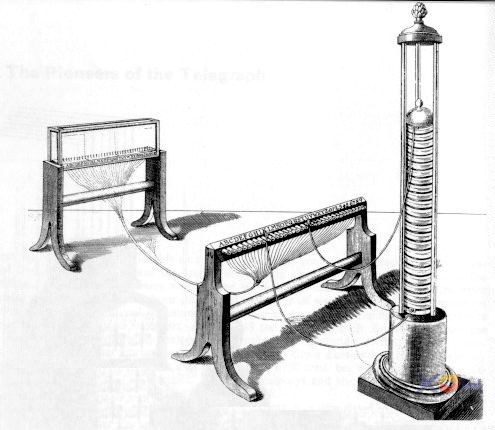
Of course, the infrastructure of wire communication started developing roughly. The appearance of Morse device and the dexterous phone patenting by Bell (the disputes on who nevertheless invented the phone principle still continue) led to the first wave of planet informatization. It was surprising time of new technologies development which gave tens of thousands of workplaces, such as: telephonists, technicians, engineers, telephone and cable companies.

By the way, about telephonists, the requirements to applicants were high. The girl must be clever, have excellent memory and look well. Probably, such requirement was because only men were telephone exchanges chiefs. Certainly, the companies on various cable equipment production started developing roughly, some peculiar technological startups of the 19th century).
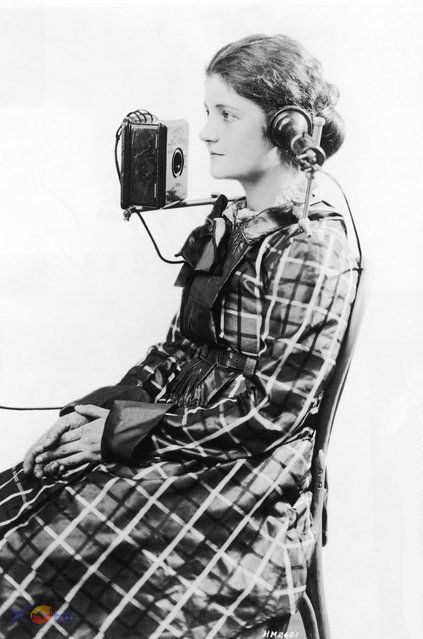

Certainly, the important thing for communication development was to introduce them to people. Such promotion actions as phone cabin on wheels could be seen on streets of the cities. Just like now.
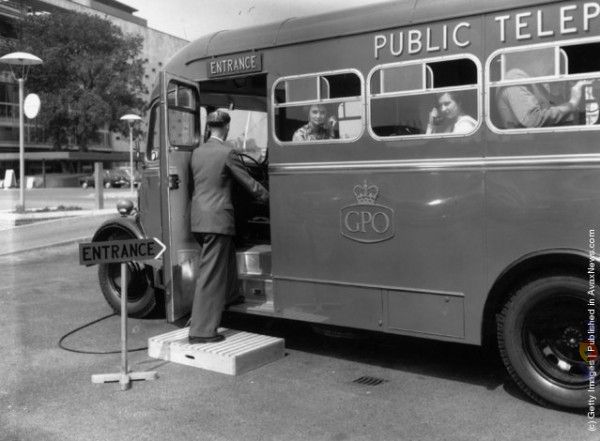
And, of course, people were interested in graphic information transmission. Since the invention of telegraph works on images transmission began, mainly photos. The first prototypes of fax devices were developed. However the appropriate phototelegraphic device was made only after World War II and to the image could be sent via phone in the sixties. Anyway, these technologies appeared and we are not surprised.
As far as I understand, there is a video camera ocular in the right top corner and the equipment for the image transmission is behind a screen. It was a bulky and huge system.
The invention of radio
The real break in technologies came after the radio invention. Thanks to it, people could get rid of wires and to set communication everywhere. Certainly, first of all, the military got this technology. Almost at once the radio started forcing out the wire telegraph. But, of course, it wasn’t at once.
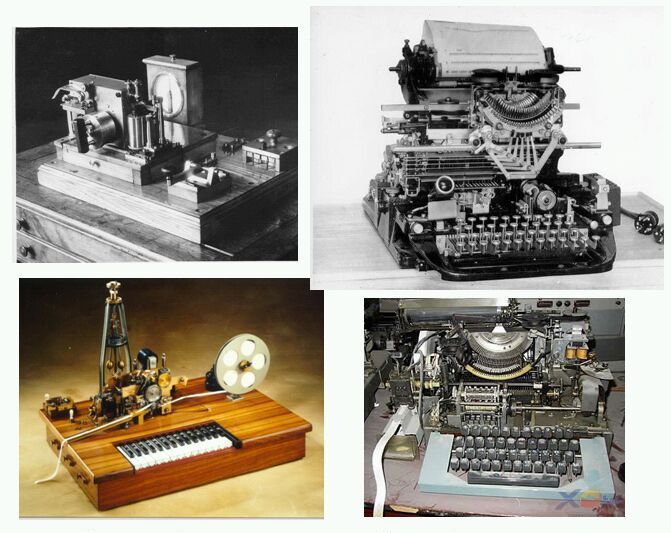
The first radio equipment was undependable and extremely expensive. The speech information transmission was impossible. Only cable Morse code was used, but it was a real miracle as well. Certainly, thanks to the radio invention, we are obliged to the occurrence of voice radio stations and radio telephones, then paging and cellular communication.

The main invention is the occurrence of television and information networks which are considered to be the final communication technologies of our modern representation.
In conclusion …
Products and solutions that make communications really united become more and more popular now. These are solutions that combine the advantages of all kinds of communication all over the world! XOtel is expanding its horizons, CONNECTING CONTINENTS.
World's First Mobile Phone (1922)